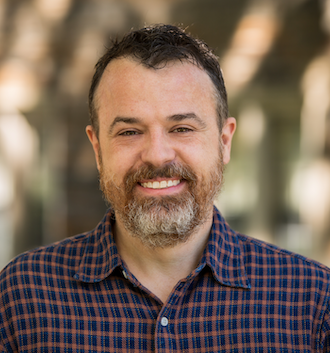
Seminar Schedule
Featured seminars
Upcoming seminars
Thursday, April 25 –
Friday, April 26, 2024
Thursday, April 25 –
Friday, April 26, 2024
Wednesday, May 1 –
Thursday, May 2, 2024
Wednesday, May 1 –
Thursday, May 2, 2024
Thursday, May 2 –
Saturday, May 4, 2024
Thursday, May 2 –
Saturday, May 4, 2024
Wednesday, May 8 –
Thursday, May 9, 2024
Wednesday, May 8 –
Thursday, May 9, 2024
Thursday, May 9 –
Saturday, May 11, 2024
Thursday, May 9 –
Saturday, May 11, 2024
Monday, May 13 —
Monday, June 10, 2024
Monday, May 13 —
Monday, June 10, 2024
Tuesday, May 14 –
Friday, May 17, 2024
Tuesday, May 14 –
Friday, May 17, 2024
Weds, May 15 – Fri, May 17,
Mon, May 20 – Weds, May 22, 2024
Weds, May 15 – Fri, May 17,
Mon, May 20 – Weds, May 22, 2024
Monday, May 20 –
Thursday, May 23, 2024
Monday, May 20 –
Thursday, May 23, 2024
Wednesday, May 29, 2024
Wednesday, May 29, 2024
Thursday, May 30 –
Friday, May 31, 2024
Thursday, May 30 –
Friday, May 31, 2024
Tuesday, June 4 –
Friday, June 7, 2024
Tuesday, June 4 –
Friday, June 7, 2024
Tuesday, June 4 –
Friday, June 7, 2024
Tuesday, June 4 –
Friday, June 7, 2024
Tuesday, June 4 –
Friday, June 7, 2024
Tuesday, June 4 –
Friday, June 7, 2024
Tuesday, June 11 –
Friday, June 14, 2024
Tuesday, June 11 –
Friday, June 14, 2024
Tuesday, June 11 –
Friday, June 14, 2024
Tuesday, June 11 –
Friday, June 14, 2024
Tuesday, June 11 –
Friday, June 14, 2024
Tuesday, June 11 –
Friday, June 14, 2024
Monday, June 17 —
Monday, July 15, 2024
Monday, June 17 —
Monday, July 15, 2024
Tuesday, June 18 –
Friday, June 21, 2024
Tuesday, June 18 –
Friday, June 21, 2024
Tuesday, June 18 –
Friday, June 21, 2024
Tuesday, June 18 –
Friday, June 21, 2024
Tuesday, June 18 –
Friday, June 21, 2024
Tuesday, June 18 –
Friday, June 21, 2024
Tuesday, June 25 –
Friday, June 28, 2024
Tuesday, June 25 –
Friday, June 28, 2024
Tuesday, June 25, –
Friday, June 28, 2024
Tuesday, June 25, –
Friday, June 28, 2024
Tuesday, July 9 –
Friday, July 12, 2024
Tuesday, July 9 –
Friday, July 12, 2024
Tuesday, July 9 –
Friday, July 12, 2024
Tuesday, July 9 –
Friday, July 12, 2024
Tuesday, July 16 –
Friday, July 19, 2024
Tuesday, July 16 –
Friday, July 19, 2024
Tuesday, July 16 –
Friday, July 19, 2024
Tuesday, July 16 –
Friday, July 19, 2024
Tuesday, July 23 –
Friday, July 26, 2024
Tuesday, July 23 –
Friday, July 26, 2024
Tuesday, July 23 –
Friday, July 26, 2024
Tuesday, July 23 –
Friday, July 26, 2024
Tuesday, July 23 –
Friday, July 26, 2024
Tuesday, July 23 –
Friday, July 26, 2024
Monday, July 29 —
Monday, August 26, 2024
Monday, July 29 —
Monday, August 26, 2024
Tuesday, July 30 –
Friday, August 2, 2024
Tuesday, July 30 –
Friday, August 2, 2024
Tuesday, July 30 –
Friday, August 2, 2024
Tuesday, July 30 –
Friday, August 2, 2024
Tuesday, August 6 –
Thursday, August 8, 2024
Tuesday, August 6 –
Thursday, August 8, 2024
Tuesday, August 6 –
Friday, August 9, 2024
Tuesday, August 6 –
Friday, August 9, 2024
Monday, August 12 –
Tuesday, August 13, 2024
Monday, August 12 –
Tuesday, August 13, 2024
Tuesday, August 13 –
Friday, August 16, 2024
Tuesday, August 13 –
Friday, August 16, 2024
Tuesday, August 13 –
Friday, August 16, 2024
Tuesday, August 13 –
Friday, August 16, 2024
Tuesday, August 27 –
Wednesday, August 28, 2024
Tuesday, August 27 –
Wednesday, August 28, 2024
*Seminar is offered jointly by Statistical Horizons and Code Horizons. Code Horizons is a division of Statistical Horizons.








